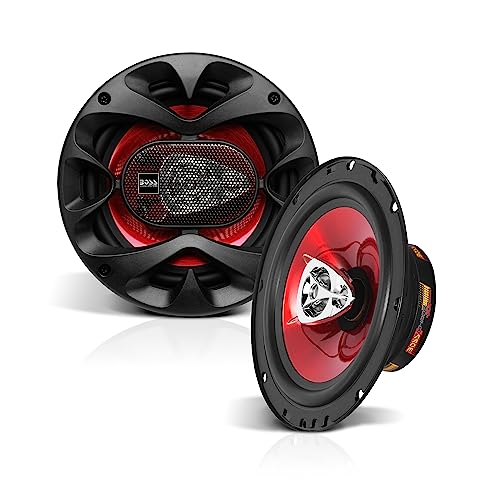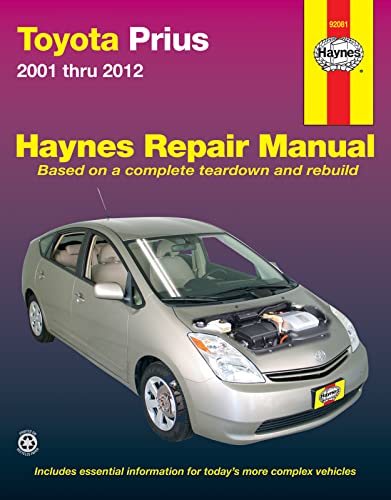As an Amazon Associate, I earn from qualifying purchases
Thinking about driving a new Toyota without the long-term commitment of buying? Leasing a car might be the perfect option for you.
But how does leasing a car work, especially with Toyota? If you want to enjoy the latest models, lower monthly payments, and flexible terms, understanding the leasing process is key. Keep reading, and you’ll discover exactly how leasing a Toyota can fit your lifestyle and budget—making your next ride easier and smarter than you ever imagined.
Benefits Of Leasing A Toyota
Leasing a Toyota offers many advantages for drivers. It provides an easy way to drive a new car without buying it. People can enjoy a Toyota’s quality and features without a large upfront cost. Leasing suits those who want a fresh car every few years. It also helps save money on some expenses.
Lower Monthly Payments
Leasing a Toyota usually costs less each month than buying. Monthly payments are based on the car’s value during the lease, not the full price. This makes leasing more affordable for many people. It frees up cash for other needs or savings. A lower payment means you can drive a better model for less.
Access To Latest Models
Leasing allows you to drive a new Toyota every few years. You get to experience the newest technology and safety features. New models often have better fuel efficiency and design. This keeps your driving experience fresh and exciting. No worries about selling or trading the old car.
Reduced Maintenance Costs
Most lease terms match the car’s warranty period. This means fewer repair costs during the lease. Toyota covers many repairs and services for you. You only pay for routine maintenance like oil changes. This can save money and reduce stress about car care.
Key Leasing Terms To Know
Leasing a Toyota car involves specific terms that shape your lease deal. Knowing these terms helps you understand costs and conditions. This knowledge makes leasing clearer and easier.
Below are key leasing terms. Each one affects your monthly payments and lease experience.
Capitalized Cost
Capitalized cost is the price of the car for leasing. It is similar to the car’s sale price. A lower capitalized cost means lower monthly payments. Sometimes, you can negotiate this price before signing.
Residual Value
Residual value is the car’s estimated worth at lease end. It is set by the leasing company. A higher residual value lowers your monthly lease cost. This is because you pay for the car’s value loss during the lease.
Money Factor
Money factor is the lease interest rate. It shows how much you pay to finance the car. A smaller money factor means less interest and lower payments. You can multiply it by 2,400 to get the annual percentage rate (APR).
Lease Term
Lease term is the length of your lease contract. It usually lasts 24 to 36 months. A shorter term means higher monthly payments but newer cars more often. A longer term lowers payments but may increase maintenance costs.
Step-by-step Leasing Process
Leasing a Toyota car involves a clear, easy process. Knowing each step helps make smart decisions. This guide breaks down the leasing journey into four key parts. Follow these steps to lease a Toyota with confidence.
Choosing The Right Toyota Model
First, pick the Toyota model that fits your needs. Think about size, style, and features. Consider fuel efficiency and safety ratings too. Visit a dealer or explore Toyota’s website to compare models. Choose a car that feels right for your lifestyle and budget.
Negotiating Lease Terms
Next, discuss the lease details with the dealer. Focus on the lease length, usually 24 to 36 months. Ask about mileage limits and fees for extra miles. Negotiate the monthly payment and any upfront costs. Clear terms help avoid surprises later on.
Reviewing The Lease Agreement
Carefully read the lease contract before signing. Check all numbers and conditions match your agreement. Look for fees, penalties, and maintenance responsibilities. Confirm the insurance requirements and end-of-lease options. Understanding the contract protects your interests.
Signing And Taking Delivery
After approval, sign the lease documents. Keep copies for your records. Arrange a date to pick up your new Toyota. Inspect the car for any damage before driving away. Enjoy your leased Toyota with peace of mind.

Credit: www.caranddriver.com
Costs Involved In Leasing
Leasing a Toyota involves several costs you should know. These costs cover different parts of the lease agreement. Understanding them helps you plan your budget better. Below, we explain the key costs involved in leasing a car.
Down Payment And Fees
The down payment is the first amount you pay. It lowers your monthly lease payments. Some Toyota leases require a down payment, while others might not.
Besides the down payment, expect fees like acquisition and documentation fees. These are one-time charges at the start of your lease. Knowing these helps avoid surprises when signing the contract.
Monthly Lease Payments
Monthly payments are the main cost of leasing. They cover the car’s depreciation during the lease term. Your payment depends on the Toyota model, lease length, and mileage limits.
Lower payments often mean a higher down payment or shorter lease term. Each lease is different, so check the payment details carefully.
End-of-lease Charges
At lease end, you may face extra charges. These include fees for excess mileage and wear and tear. Inspect the Toyota carefully before returning it to avoid extra costs.
Sometimes, you can buy the car at the end of the lease. If not, just return it and pay any final fees. Knowing these charges saves money and stress.
Mileage Limits And Wear
Leasing a Toyota car comes with rules about mileage and wear. These rules help keep the car in good condition. They also protect the leasing company’s investment. Understanding these rules helps avoid extra costs and surprises at lease end.
Understanding Mileage Caps
Leases set a limit on miles you can drive each year. Common limits are 10,000 to 15,000 miles annually. This limit depends on your lease agreement. Driving over the limit means extra charges later. Choose a mileage cap that fits your driving habits.
Penalties For Excess Mileage
Exceeding your mileage limit causes fees. These fees usually charge a set amount per extra mile. For example, 15 to 25 cents per mile. These costs add up quickly. Keep track of your miles to avoid large penalties.
Wear And Tear Guidelines
Leasing companies expect normal wear and tear only. Normal means small scratches and minor dents. Major damage or stains may cost you. Check your lease for specific wear rules. Repair damages before returning the car to save money.

Credit: www.toyotaofbrookhaven.com
Options At Lease End
At the end of your Toyota lease, you have several choices. These options help you decide what to do next. Understanding these choices makes the process easier and stress-free.
Returning The Vehicle
Returning the vehicle is the most common option. You bring the Toyota back to the dealer. The dealer checks the car for damage and excess wear. You may pay fees if there is extra damage or too many miles. After the return, you are free from the lease contract.
Buying Your Toyota
You can buy the Toyota at the end of the lease. The price is usually set in the lease agreement. Buying lets you keep the car you have driven. It can be a good choice if you like the vehicle and want to avoid new payments.
Leasing A New Toyota
Leasing a new Toyota means starting a fresh lease on a new model. You return your current vehicle and choose another Toyota. This option offers the latest features and technology. It also keeps your monthly payments low and predictable.
Tips For Smart Savings
Leasing a Toyota can save money if done smartly. Small choices affect total cost. Follow these tips to get the best deal and save more.
Understand each step clearly. It helps avoid extra fees and surprises. Keep control of your budget and enjoy your new car.
Choosing The Right Lease Term
Pick a lease term that fits your needs. Shorter leases usually cost more monthly. Longer leases lower payments but may increase maintenance costs.
Consider how long you want to use the car. Think about your budget and future plans. Balance monthly cost with total expense for best value.
Maintaining The Vehicle
Keep the Toyota in good shape. Follow the service schedule from the dealer. Clean and fix small damages quickly to avoid big charges later.
Good care keeps the car’s value high. It helps avoid extra fees at lease end. Maintenance protects your investment and keeps you safe.
Negotiating Better Deals
Talk with the dealer about the price. Ask for discounts or special offers. Compare offers from different dealers to find the best one.
Don’t accept the first deal. Be ready to walk away if terms are not fair. Strong negotiation can lower your monthly payments and fees.

Credit: www.hamertoyota.com
Frequently Asked Questions
What Does Leasing A Toyota Car Mean?
Leasing a Toyota means renting it for a set time, usually 2-3 years, with monthly payments.
How Much Do I Pay Monthly For A Toyota Lease?
Monthly payments depend on the car model, lease length, and your credit score.
Can I Buy The Toyota After Leasing It?
Yes, most leases allow buying the car at the end for a set price.
What Are The Mileage Limits In A Toyota Lease?
Leases usually have yearly mileage limits, like 10,000 to 15,000 miles per year.
What Happens If I Return The Toyota Early?
Returning early may cause fees or penalties, depending on the lease terms.
Who Pays For Maintenance During A Toyota Lease?
You usually pay for regular maintenance, but major repairs may be covered by warranty.
Conclusion
Leasing a Toyota car offers clear steps and benefits. You pay less upfront and enjoy lower monthly payments. At lease end, you can return the car or buy it. Mileage limits and maintenance rules matter to keep costs down. Leasing suits those who like new cars often.
Understanding terms helps avoid surprises later. Choose wisely to fit your budget and lifestyle. Leasing can be a smart way to drive a Toyota. Simple, flexible, and budget-friendly—leasing works for many drivers.
As an Amazon Associate, I earn from qualifying purchases


